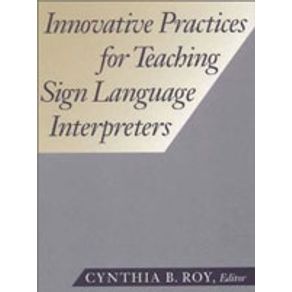Researchers now understand interpreting as an active process between two languages and cultures, with social interaction, sociolinguistics, and discourse analysis as more appropriate theoretical frameworks. Roy's penetrating new book acts upon these new insights by presenting six dynamic teaching practices to help interpreters achieve the highest level of skill. Elizabeth Winston and Christine Monikowski begin by explaining discourse mapping to enable students to develop a mental picture of a message's meaning and the relationships of context, form, and content. Kyra Pollitt discusses critical discourse analysis, to reveal some of the cultural influences that shape a speaker's language use. Melanie Metzger describes preparing role-plays so that students learn to effectively switch back and forth between languages, manage features such as overlap, and make relevant contributions to interaction, such as indicating the source of an utterance. Jeffrey Davis illustrates the translation skills that form the basis for teaching consecutive and simultaneous interpreting to help students understand the intended meaning of the source message, and also the manner in which listeners understand it. Rico Peterson demonstrates the use of recall protocols, which can be used to teach metacognitive skills and to assess the student's sign language comprehension. Finally, Janice Humphrey details the use of graduation portfolios, a valuable assessment tool used by the faculty to determine a student's level of competency. These imaginative techniques in Innovative Practices promise gains in sign language interpreting that will benefit teachers, students, and clients alike.


